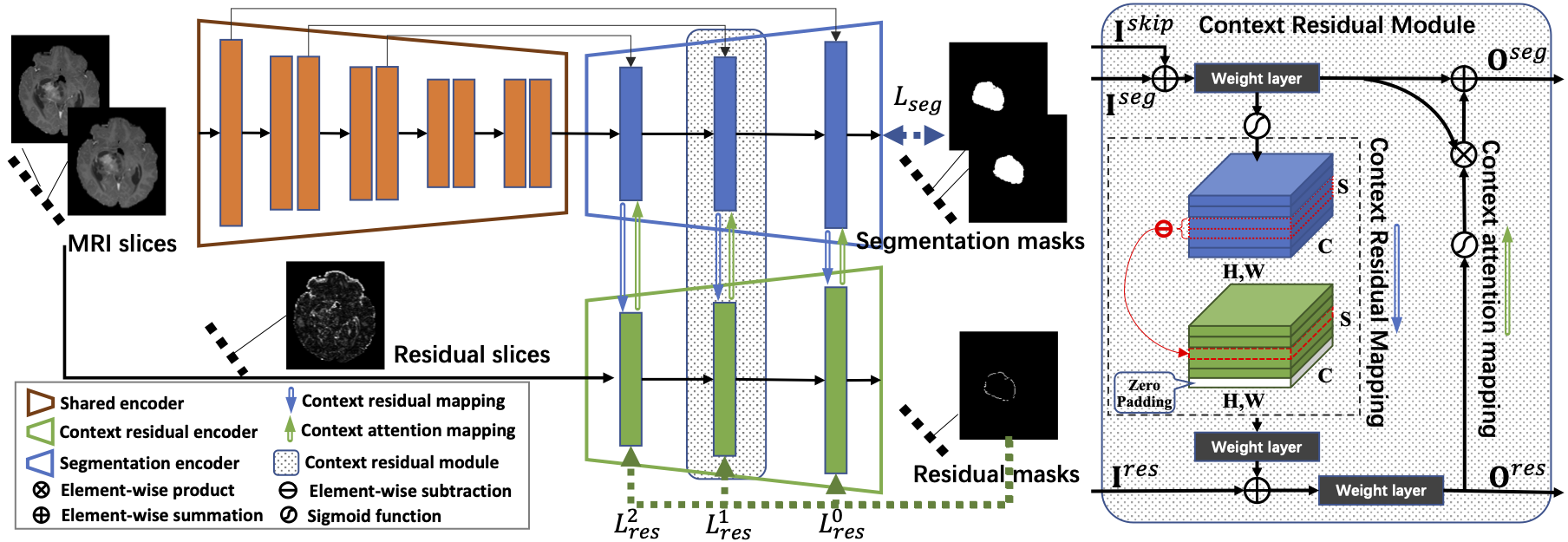Inter-slice Context Residual Learning for 3D Medical Image Segmentation
Automated and accurate 3D medical image segmentation plays an essential role in assisting medical professionals to evaluate disease progresses and make fast therapeutic schedules. Although deep convolutional neural networks (DCNNs) have widely applied to this task, the accuracy of these models still need to be further improved mainly due to their limited ability to 3D context perception. In this paper, we propose the 3D context residual network (ConResNet) for the accurate segmentation of 3D medical images. This model consists of an encoder, a segmentation decoder, and a context residual decoder. We design the context residual module and use it to bridge both decoders at each scale. Each context residual module contains both context residual mapping and context attention mapping, the formal aims to explicitly learn the inter-slice context information and the latter uses such context as a kind of attention to boost the segmentation accuracy. We evaluated this model on the MICCAI 2018 Brain Tumor Segmentation (BraTS) dataset and NIH Pancreas Segmentation (Pancreas-CT) dataset. Our results not only demonstrate the effectiveness of the proposed 3D context residual learning scheme but also indicate that the proposed ConResNet is more accurate than six top-ranking methods in brain tumor segmentation and seven top-ranking methods in pancreas segmentation. Code is available at https://git.io/ConResNet
PDF Abstract







 3DNet
3DNet